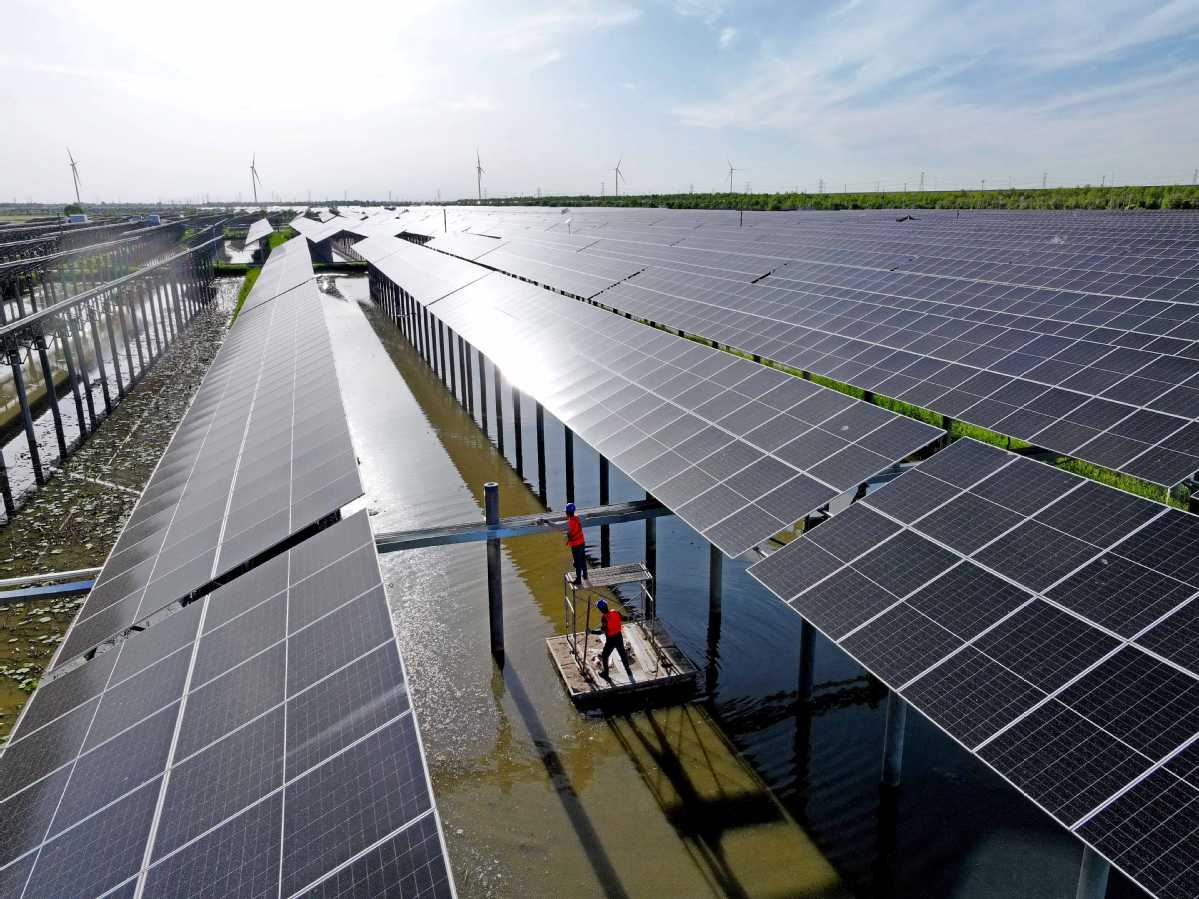
Technicians check photovoltaic panels at a solar power station in Dezhou, Shandong province, in May. ZHANG ZHENXIANG/FOR CHINA DAILY
China is poised to provide effective solutions to the significant challenges faced in achieving a global energy transition, as the country has been continuously accelerating energy technology innovation, said industry experts.
China is already a pioneer in global energy technology transformation, as the world's second-largest economy has been vigorously promoting the implementation of advanced technologies, which is fostering the gradual maturation of related industries, said Lin Jianhai, vice-president of the International Finance Forum and former secretary of the International Monetary Fund.
The vast scale of China's market and its comprehensive industrial system have enhanced the overall development level of the energy industry chain while driving the global green transition, Lin said.
He made the remarks during the launch ceremony of the IFF Energy Transition and Development Committee, jointly initiated by the IFF and the China Electric Power Construction Association (CEPCA), in Beijing on Thursday.
In the field of energy supply, key technologies such as third-generation nuclear power have achieved breakthroughs. China is leading globally in areas such as photovoltaic cell conversion efficiency, ultrahigh voltage transmission technology and the hydropower industry. The industrialization of frontier technologies like new energy storage and hydrogen energy is also accelerating, he said.
However, Lin added that the global energy transition still faces numerous challenges, such as financing gaps and inadequate coordination of industrial policies.
China has achieved significant success in energy transition in recent years, with its renewable energy installed capacity exceeding 1.5 billion kilowatts last year, accounting for over 50 percent of the nation's total installed power capacity and historically surpassing thermal power installed capacity, according to data released by the National Energy Administration.
The country accounted for more than half of the global new renewable energy installed capacity in 2023, it said.
The administration said further efforts are in the pipeline to speed up power grid construction and enhance power transmission mechanism in the country, as China's power grid faces increasing stability challenges with the rising share of electricity generated from intermittent new energy sources.
As the proportion of renewable energy sources used for power generation increases, the grid faces significant challenges in absorbing them, it said.
To improve the grid's capacity to accommodate power from new energy sources, the administration has been stepping up efforts to accelerate the construction of grid projects.
This year, the government is prioritizing the advancement of 33 key projects, including the Sichuan-Chongqing ultrahigh voltage alternating current project, while speeding up the initiation of construction on 37 other key projects.
Du Zhongming, head of the electricity bureau of the NEA, said the NEA will work to improve the grid's ability to flexibly adjust scheduling of power supply and enhance inter-provincial power-sharing capabilities.
According to a report released by the International Energy Agency in June, over the past decade, the average costs of global wind power and photovoltaic projects have cumulatively decreased by more than 60 percent and 80 percent respectively, mostly driven by China.
In 2023, China's new renewable energy installed capacity exceeded the total of the rest of the world, making it the largest contributor to the development of the global renewable energy industry, it said.
Source: By Zheng Xin, chinadaily.com, July 13, 2024 [https://www.chinadaily.com.cn/a/202407/13/WS6691b61ca31095c51c50dd84.html]

